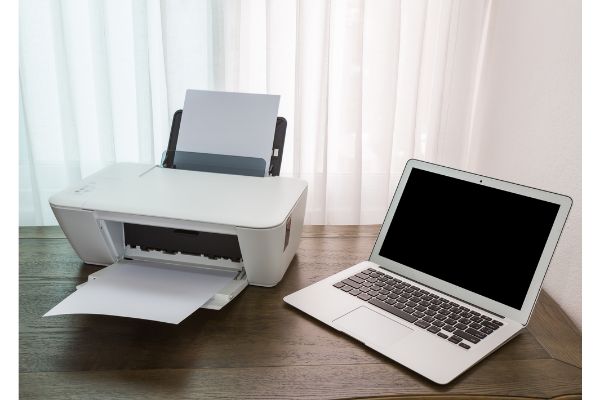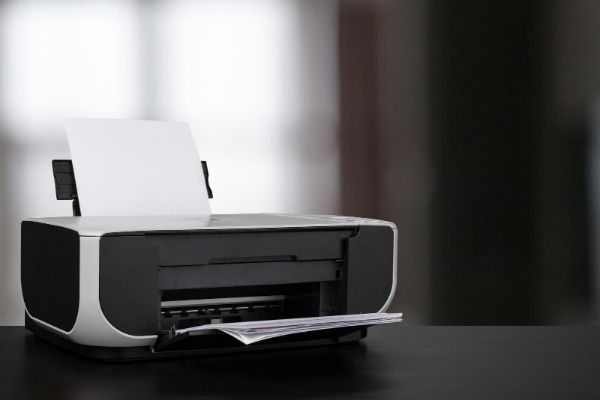Disclaimer: This post may contain affiliate links, meaning we get a small commission if you make a purchase through our links, at no cost to you. For more information, please visit our Disclaimer Page.
A printer is a peripheral device that links up with your computer, and it is probably one of the most important pieces of technology that connects to desktops or laptops on a daily basis. Many businesses still need to print paper documents for distribution throughout various teams or as a way to keep files and records in a physical format.
Even at home, you may need to use a printer to create documents that you want to keep, artwork from the graphics design programs you might use, or flyers that you want to put up throughout your neighborhood.
Modern printers will need drivers in order to do their jobs effectively. Drivers are pieces of software that tell the printer how to function. Essentially, they provide a means of communicating instructions between your computer and the printer to which it is connected.
Some users might wonder if they always need drivers to make printing work. We will go into this topic in our article below. Additionally, we’ll make a distinction between wired and wireless printers, and we can talk about whether there are any differences in the requirements for drivers between the two.
We can also discuss why some printer drivers seem to perform worse than others, problems you might have when trying to install them, and go over how these software updates may install themselves on your system automatically.
Table of Contents
Do I Need a Printer Driver To Print?
For most conventional means of printing, you will need a driver in order to print. There are some exceptions to this that fall outside of the typical setup in which the printer and computer are connected to each other through a cable or wireless network. We will discuss these options in detail later, but you will need drivers for any situation that involves the setup above.
Primarily, this is because the printer needs to know how to communicate with your computer’s operating system, and drivers are the software options that create the bridge that allows this communication to occur.
In addition to basic communication between two devices, drivers are how a computer and printer can even recognize each other. When you plug a printer into a computer, the operating system of the latter needs to figure out what other device is trying to talk to it. The drivers have ways of making sure the computer knows that the specific thing that suddenly plugged into it is a printer.
Thanks to this, the operating system knows what the printer can do, and users will then have access to commands that send data to the queue for printing. Some printers may have additional features you can make use of, and drivers contain information that can help to decipher all of this.
While drivers are necessary for this sort of typical printing through the usual interfaces, this is not the only method by which you can print things. Because of this, not all print jobs require drivers.
However, if your goal is to avoid needing drivers installed in order to perform these operations, you’ll have to change how you print things.
There are a few ways that you can do this, and we will cover some of the most common ones here:
1. You can get a driverless printer. Most of the bigger manufacturers make physical printers that will need drivers. However, there are some smaller brands that might make printers that are designed to be driverless.
In these cases, you should be able to plug the printer into your operating system, have the OS detect it, and begin printing to that device immediately.
2. If you don’t have one of these printers, you can use a cloud service to do it instead. With cloud-based printing, you can connect your device via a web interface.
You’ll then email your print job to the cloud service of your choice, it will be formatted there, and you’ll receive an email back with the documents in question ready for printing.
3. You can bypass the need for drivers on some printers that allow for USB printing applications instead. In this way, the printer might be able to handle different file types by going right to your operating system’s control panel.
4. Similarly, you can print via the web administration console. Not all printers are capable of this, but the ones that are should have built-in drivers and support for this process. The difference between this and USB printing is that you’ll use a printer that has an active network connection to do the job.
Do Wireless Printers Need Drivers?
Yes, you still need drivers to print from a wireless printer. Unlike a typical printer, the wireless version will connect to a Wi-Fi network. It will then use this connection as a way to link up with your computer.
One wireless printer might be on the same network as multiple computers at once, and this can be a useful setup to have for an office space, for example. However, this only changes the medium by which the printer communicates with a computer’s operating system.
One is a cable, and one is a Wi-Fi signal. The two pieces of tech still need to relay instructions to each other, and drivers are still the primary method by which they will do this.
Your wireless printer should include installation disk software that you can set up and run through your operating system. This software will make sure the printer works correctly, and part of that job will involve making sure the necessary drivers are installed.
If you do not have the proper data saved on any media, you can also visit the manufacturer’s website itself. Once you are here, you can go to any support page and search for the model number that matches your wireless printer.
Doing this search on the official site should point you in the direction of drivers that you can download from the developer. Once downloaded, you can run an installer to put them on the system.
Although you could use some of the methods we described above, drivers are still necessary. In fact, even a blank page needs to have driver support ready if you are printing documents the conventional way using a wireless printer.
Why Are Some Printer Drivers So Bad?
If you search within the community, you may find that there are some divisive opinions on which printers or other peripherals are the best to use. However, there seem to be some common threads about printers and their software, and the prevailing theme is that some are worse than others.
There is no single reason why this is, but we can make some educated guesses as to why so many people who have to deal with printers on a daily basis find some problems with the software.
Part of this issue has to do with how printers as physical devices are handled. Developers for printers will often have entirely different teams working on the software side of things or the hardware side of things. Because of this, the skills necessary for developing the right drivers to help with instructions to the printer can be quite compartmentalized.
Therefore, it can be difficult to get drivers that actually do all they are supposed to do for giving instructions to the printer for its various functions. You may find that certain drivers are not optimized well for carrying out everything that a particular printer model is supposed to be able to do, for example.
The other part of the equation involves how you have to install drivers. Some printers or companies require that you download apps or proprietary programs. The drivers themselves are embedded within these programs, but you may need to download and set up everything before you’re able to get to the drivers and tell them to install on the system.
Sometimes, you may need to register for some type of account with the manufacturer before you can even begin the entire process. All of this creates extra steps or work that many users would prefer to avoid, and it can contribute to the feeling that much of this software functions poorly.
Why Is the Printer Driver Extracting but Not Installing?
Once you download the appropriate printer driver from the manufacturer that matches your printer, you will need to extract the compressed file or set of files in order to put them in the proper directory.
However, you may find that there are some issues with the actual installation, and this can be true even if the prior extraction process seems to work fine.
One of the most common things you might face in this situation is that the extractor tool seems to unpack all the files, but it shuts down after that. In short, while the installation was supposed to take place, the program only did half the job.
In most cases, this happens because there is some error in communication in the full file path of the extracted files. The operating system seems to think that the job is done, and the extractor closes itself as a result.
One trick you can try is to look for the ‘Temp’ folder in your computer’s system. Once you find it, look for the brand or make of the printer you have as part of the name of an executable setup file. Try running that file manually to see if you can get the installation started.
Do Drivers Automatically Install When You Connect a Printer?
It can depend on the make and model of the printer you have, but there are some printers such as older models that can install drivers automatically. Once you connect the device, your operating system should find it. If drivers are needed, it may prompt you to download them in order to begin the installation. The printer and the computer might find the correct drivers automatically, too.
Conclusion
Printer drivers can seem unrefined at times, but they are necessary pieces of software for pretty much any standard print job. Some of them will install by themselves when you plug the unit into your computer. If you would like to avoid drivers altogether, there are different methods for sending a job to a printer that can bypass them.


